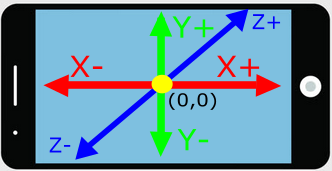Table of Contents
3. Table mbm¶
3.1. World¶
 Explaining how orientation and world works.
Explaining how orientation and world works.
World is the way that scene sorts renderizable to be render.
Order to render
world
zorderExample
1st
3D-22nd-13th04th15th2tMesh = mesh:new('3D',0,0,-2)tMesh = mesh:new('3D',0,0,-1)tMesh = mesh:new('3D',0,0,0)tMesh = mesh:new('3D',0,0,1)tMesh = mesh:new('3D',0,0,2)2nd
2DW-22nd-13th04th15th2tSprite = sprite:new('2DW',0,0,-2)tSprite = sprite:new('2DW',0,0,-1)tSprite = sprite:new('2DW',0,0,0)tSprite = sprite:new('2DW',0,0,1)tSprite = sprite:new('2DW',0,0,2)3th
2DS-22nd-13th04th15th2tTexture = texture:new('2DS',0,0,-2)tTexture = texture:new('2DS',0,0,-1)tTexture = texture:new('2DS',0,0,0)tTexture = texture:new('2DS',0,0,1)tTexture = texture:new('2DS',0,0,2)
world works.worlds.world.world is 2DW if not specified.world and initial position.position is composed by x, y and z. The z position is what determines the order to render as described on table above.world is independent on orientation.
Figure 3.1 Portrait orientation¶
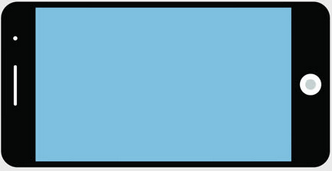
Figure 3.2 Landscape orientation¶
Note
Regardless the orientation, the coordinates will be according to the world chosen.
For the explanation of world, we will use the following image:
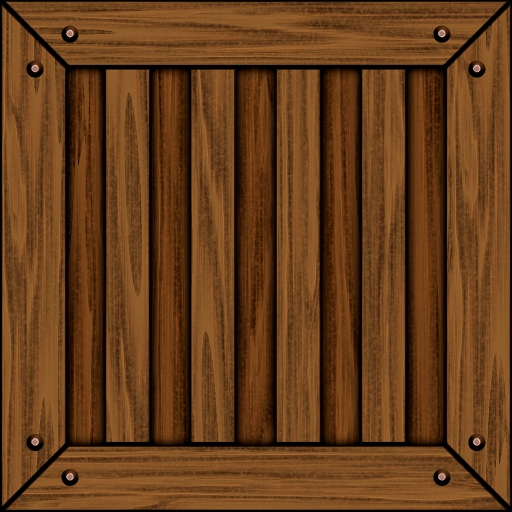
Figure 3.3 crate.png¶
- A
2DSrenderizable is forX,Ycoordinates at main screen and do not has camera. The origin for
2DSis on top-left screen.The axis
Xincrement to the right.The axis
Yincrement down.
- A
2D screen coordinates (portrait orientation)
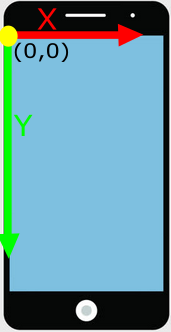
Figure 3.4 Portrait orientation¶
Example:
tTexture = texture:new('2DS')
if tTexture:load('crate.png') then
tTexture:setSize(100,100)
end
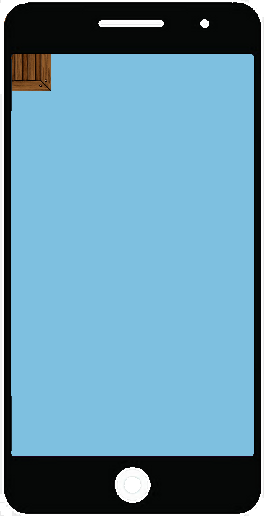
Figure 3.5 Texture crate.png, 2DS, at 0,0 position and portrait orientation.¶
2D screen coordinates (landscape orientation)
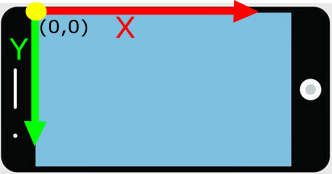
Figure 3.6 Landscape orientation¶
Example:
tTexture = texture:new('2DS')
if tTexture:load('crate.png') then
tTexture:setSize(100,100)
end
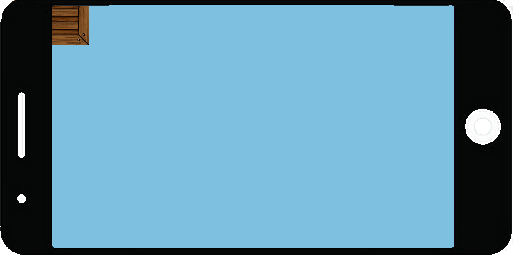
Figure 3.7 Texture crate.png, 2DS, at 0,0 position and landscape orientation.¶
- A
2DWrenderizable is forX,Ycoordinates in the world and has its own camera. The origin for
2dwis on center of screen.The axis
Xincrement to the right.The axis
Yaxis increment up.
- A
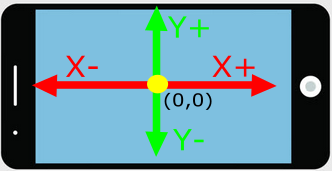
Figure 3.8 2D world coordinates (landscape orientation)¶
Example:
tTexture = texture:new('2DW')
if tTexture:load('crate.png') then
tTexture:setSize(100,100)
end
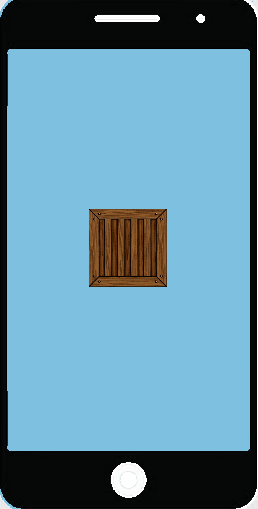
Figure 3.9 Texture crate.png, 2DW, at 0,0 position and portrait orientation.¶
- A
3Drenderizable is for 3d coordinates world and has its own camera (independent from 2D). The origin for
3Dis on center of screen.The axis
Xincrement to the right.The axis
Yincrement up.The axis
Zincrement in direction to inside the screen.
- A
tTexture = texture:new('3D')
if tTexture:load('crate.png') then
tTexture:setSize(100,100)
end
3.2. mbm¶
3.2.1. addPath¶
- addPath(string newPath)¶
Add a path to search files.
This command will feed an internal path list in the engine. The path is used to search file on registered folder.
- Parameters
string – Full path or partial path folder path.
Example:
if mbm.get("Windows") then
mbm.addPath("C:\\my_folder_images")
elseif mbm.get("Linux") then
mbm.addPath("/var/opt/my_folder_images")
elseif mbm.get("Android") then
mbm.addPath("my_folder_images")
end
3.2.2. allPaths¶
- getAllPaths¶
Retrieve all path known by the engine.
- return
table- tPaths with all paths
Example:
local tPaths = mbm.getAllPaths()
for i=1, #tPaths do
print(tPaths[i])
end
3.2.3. Callback¶
3.2.3.1. addOnTouch¶
- addOnTouch(table renderizable, function callback)¶
Add a call back function to a renderizable object to be called when it is touched.
- Parameters
table – renderizable object.
function – callback function. Also can be as string.
Example:
--The function has to be the following signature:
function onTouchSprite (self, x, y,key)
--here we set anim 'break' when is touched. This is an example.
self:setAnim('break')
end
--
--
--
-- it works informing the function name as string:
--
mbm.addOnTouch(tMySprite,'onTouchSprite')
--
--
--
-- it works informing the literal function:
mbm.addOnTouch(tMySprite,onTouchSprite)
--
--
--
-- it works informing the anonymous function:
--
mbm.addOnTouch(tMySprite,
function (self, x, y,key) -- anonymous
self:setAnim('break')
end)
3.2.4. Dialogs¶
3.2.4.1. openFile¶
- openFile(string defaultFileName*, string extension*, ...)¶
Call a native dialog box to get a file (full path) pointing the defaultFileName and extension allowed. This method does not work on Android.
- Parameters
string – default file name as input.
string – extension filter to be applied. Can be 0 or more extensions.
- Returns
string- fileName for success or nil to canceled
Example:
local filename = mbm.openFile('mario.png','*.png','*.jpeg')
if filename then
print("File ",filename)
end
3.2.4.2. openMultiFile¶
- openMultiFile(string defaultFileName*, string extension*, ...)¶
Call a native dialog box to get one or more files (full path) pointing the defaultFileName and extension allowed. This method does not work on Android.
- Parameters
string – default file name as input.
string – extension filter to be applied. Can be 0 or more extensions.
- Returns
table- allFiles for success or nil to canceled
Example:
local tFiles = mbm.openMultiFile('mario.png','*.png','*.jpeg')
if tFiles and #tFiles > 0 then
for i=1, #tFiles do
print("File ",i,tFiles[i])
end
end
3.2.4.3. saveFile¶
- saveFile(string defaultFileName*, string extension*, ...)¶
Call a native dialog box to save a file (it will retrieve a full path) pointing the defaultFileName and extension allowed. This method does not work on Android.
- Parameters
string – default file name as input.
string – extension filter to be applied. Can be 0 or more extensions.
- Returns
string- fileName for success or nil to canceled
Example:
local filename = mbm.saveFile('test.txt','*.txt','*.lua')
if filename then
print("File ",filename)
end
3.2.4.4. openFolder¶
- openFolder(string title*, string* defaultPath)¶
Call a native dialog box to get a folder path pointing the default path optionally. This method does not work on Android.
- Parameters
string – title default to be showed on dialog box.
string – default path to folder start.
- Returns
string- folderName for success or nil to canceled
Example:
local folderPath = mbm.openFolder('Please choose a folder','C://') --for windows for example.
if folderPath then
print("folder ",folderPath)
end
3.2.4.5. messageBox¶
- messageBox(string title*, string message*, string dialogType*, string iconType*)¶
Call a native message box dialog. This method does not work on Android.
- Parameters
string – title to be showed on message box.
string – message to be showed on message box.
string – dialog Type one of the valid type as string
ok,okcancel,yesno.string – icon Type one of the valid icon type as string
info,warning,error,question.
- Returns
boolean- true for yes/ok or false to no/canceled
Example:
local ret = mbm.messageBox( 'My Application title',
'There is no connection! \n Continue?',
'yesno',
'info')
if ret then
print('yes')
else
print('no')
end
3.2.4.6. inputBox¶
- inputBox(string title*, string message*, string defaultInput*)¶
Call a native input box dialog. This method does not work on Android.
- Parameters
string – title to be showed on input box.
string – message to be showed on input box.
string – default Input a default value as input.
- Returns
string- value for the input or nil if canceled
Example:
local name = mbm.inputBox( 'My Application title',
'Please enter your name:',
'my_name')
if name then
print('name:',name)
end
3.2.4.7. inputPassword¶
- inputPassword(string title*, string message*, string defaultInput*)¶
Call a native input box dialog for password. This method does not work on Android.
- Parameters
string – title to be showed on input box.
string – message to be showed on input box.
string – default Input a default value as input.
- Returns
string- value for the input or nil if canceled
Example:
local password = mbm.inputPassword( 'My Application title',
'Please enter your password:')
if password then
print('password:',password)
end
3.2.5. FPS¶
3.2.5.1. getFps¶
- getFps(boolean * b_real)¶
Retrieve the current frames per second. Normally the engine work at 60 fps. The fps can be affected by fakeFps if it is set. In that case pass
trueto the function that it will be recoveried the real FPS.- Returns
number- fps
Example:
local fps = mbm.getFps()
print('Fps:',fps) -- this could be fake FPS if is set
local b_real = true -- request the real FPS (true)
local fps = mbm.getFps(b_real)
print('Real Fps:',fps) -- This is real FPS
3.2.5.2. setFakeFps¶
- setFakeFps(number cycles, number fps)¶
Set a fake FPS rate. A fake FPS rate is useful, for example, when we have to do a massive physics calculate for a short period of time.
Also, this is a way to simulate a “slow motion” scene. You just must to put a high FPS for that.
After the end of cycle the FPS come back to normal.
- Parameters
number – cycles making the fake fps.
number – the new value of fake fps.
Example:
local iFakeFps = 60
local iSeconds = 5
mbm.setFakeFps(iFakeFps * iSeconds,iFakeFps)
Hint
180 cycles by 60 fps will fake simulate 3 seconds.
180 cycles by 45 fps will fake simulate 4 seconds.
300 cycles by 50 fps will fake simulate 6 seconds.
3.2.6. Global¶
3.2.6.1. setGlobal¶
- setGlobal(string key,[string,number,boolean] value)¶
Set a global value. This allows exchange information among scenes using get and set. The value is permanent among scenes. You can use getGlobal to retrieve values.
- Parameters
number – key to the map
variable – the value can be any of:
string,numberorboolean
Example:
mbm.setGlobal('key','something')
mbm.setGlobal('level',10)
mbm.setGlobal('life','100')
mbm.setGlobal('super',true)
3.2.6.2. getGlobal¶
- getGlobal(string name)¶
Get a global value. This allows retrieving a value previously set using setGlobal in another scene.
- Parameters
number – key to the map
- Returns
number,stringorboolean. depends on setGlobal
Example:
local key = mbm.getGlobal('key')
local level = mbm.getGlobal('level')
local life = mbm.getGlobal('life')
local super = mbm.getGlobal('super)
3.2.6.3. clearGlobals¶
- clearGlobals¶
Example:
mbm.setGlobal('life',100)
mbm.clearGlobals()
local life = mbm.getGlobal('life')
print(life) --nil
3.2.7. getCamera¶
- getCamera(string * world)¶
Get a camera which gives you the control to the scene. See camera for more information.
- Parameters
string – world can be
'2d'or'3d'. default is'2d'.- Returns
camera table reference.
Example:
camera = mbm.getCamera() --Get camera 2DW
camera2d = mbm.getCamera('2d') --Get camera 2DW
camera3d = mbm.getCamera('3d') --Get camera 3D
Note
2d represent 2DW since 2DS has no camera
3.2.8. get¶
- get(string what)¶
Check operation system (OS), compilation flags (versions from libs).
- Parameters
string – what question as string.
- Returns
stringorbooleanornil
The following table shows the parameters available for the engine until now:
Parameter
Explanation
Result as
Windows
trueif is running on Windows
booleanAndroid
trueif is running on Android
booleanLinux
trueif is running on Linux
booleanVersion
Get all version used
stringMbm
Get the current engine version
stringBox-2d
Box 2d
versionornilif is not available
stringOpengl
Opengl
versionornilif is not available
stringLUA
LUA
versionornilif is not available
stringAudiere
Audiere
versionornilif is not available
stringMini-z
Mini-z
versionornilif is not available
stringExe Name
Executable name
stringUSE_EDITOR_FEATURES
trueif is built with editor featuresUseful for editor
booleanUSE_SQLITE3
trueif is built with sqlite3 compiled
booleanUSE_DEPRECATED_2_MINOR
trueif the version is compatible <2
booleanUSE_VR
trueif is built usingvirtual reality class beta
booleanUSE_OPENGL_ES
trueif is using opengles
booleanUSE_VULKAN
trueif is using vulkan
booleanUSE_TILE_MAP_PARSER
trueif is built with Tiled Map
booleanExample:
if mbm.get('Windows') then
print('Running on windows')
elseif mbm.get('Linux') then
print('Running on Linux')
elseif mbm.get('Android') then
print('Running on Linux')
end
print('LUA version' ,mbm.get('LUA'))
print('Using sqlite3:',mbm.get('USE_SQLITE3') or 'false')
3.2.9. getSplash¶
- getSplash¶
Retrieve a splash previously set using the method loadScene.
- Returns
renderizable- the type is dynamic, depend on loadScene second parameter of course.
Example: scene_1.lua
-- scene_1.lua
tSplash = texture:new('2ds')
tSplash:load('mario.png',50,50)
if mbm.loadScene('scene_2.lua',tSplash) then
print('scene loaded successfully')
else
print('Failed to load scene')
end
Example: scene_2.lua
-- scene_2.lua
--retrieve the splash set in the previous scene
tSplash = mbm.getSplash()
tSplash:setPos(100,100)
3.2.10. include¶
- include(string fileName)¶
Try to include a LUA script file. Return
falseon error.- Parameters
string – fileName to be loaded.
- Returns
boolean- result
The main difference between the command
include,dofileorrequirefrom LUA is that the command will use an internal list (see addPath.), to search the file. Also in case of fail, it will returnfalse(will not throw an exception).Is useful when we wish to continue the main script even some dependencies are not found.
Example:
if mbm.include('saved-data.lua') then
print('loading game...')
--do something ...
else
print('There is no saved data...')
print('New game then...')
end
3.2.11. loadScene¶
- loadScene(string fileNameScene, *renderizable splash)¶
Load a new scene.
- Parameters
string – fileNameScene file name scene to be loaded.
renderizable – splash table for splash that shows between scenes (optional).
- Returns
boolean- true for success.
Example:
if mbm.loadScene('other_Scene.lua') then
print('scene loaded successfully')
else
print('Failed to load scene')
end
--passing splash texture as parameter
--
tSplash = texture:new('2ds')
tSplash:load('mario.png',50,50)
if mbm.loadScene('other_Scene.lua',tSplash) then
print('scene loaded successfully')
else
print('Failed to load scene')
end
--passing splash file name for texture as parameter
--
if mbm.loadScene('other_Scene.lua','loading.png') then
print('scene loaded successfully')
else
print('Failed to load scene')
end
3.2.12. print¶
- print(...)¶
Overload the native print from LUA getting information from current line.
- Parameters
var-args – accept the same parameter as native print from LUA.
var-args –
lineif passed will print the line number from LUA file.var-args –
warn,error,infoif passed will print the colored tag in the output.var-args –
colorif passed will print color in the output.
the colors accepted are:
red,green,blue,cian,yellow,magenta,white.Example:
1 print('Normal print')
2
3 print('line','Hello from print')
4
5 print('error', 'An error ocurred')
6
7 print('error','line','An error ocurred at this line')
8
9 print('green','line','An importatnt thing ocurred at this line')
10
11 print('magenta','line','This color is magenta')
12
13 print('magenta','line','info', 'This color is magenta?')
14
15 print('warn','line','info', 'This is an warning?')
16
17 print('warn','line', 'No, this is an warning!')
18
19 print('info','this is an information!')
20
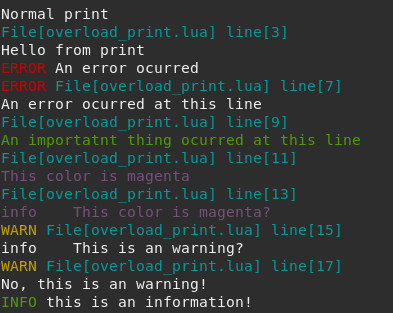
Figure 3.11 Print from engine¶
3.2.13. pause¶
- pause¶
Pause the application.
It means to stop any physic, timer, and animation. the main loop and callback function are still called by the engine. However, the delta time and fps are set to zero.
Example:
mbm.pause()
3.2.15. pauseAudioOnPauseGame¶
- pauseAudioOnPauseGame(boolean value)¶
When the application is paused (see pause), all audios are paused automatically, If it is not desired to pause them, it is possible to set this flag to
falseand all audios are not going to be paused automatically.Example:
mbm.pauseAudioOnPauseGame(false)
3.2.16. Screen¶
3.2.16.1. enableClearScreen¶
- enableClearScreen(boolean enable)¶
Enable or disable clear screen. It is normal any engine clear the screen before starting to render. Some case we may wish to disable this process (enabled by default).
- Parameters
boolean – value to enable or disable clear screen.
Example:
mbm.enableClearScreen(false)
3.2.16.2. getSizeScreen¶
- getSizeScreen¶
Get the back-buffer size. It considers the current camera’s scale.
- Returns
number,number- width, height
Example:
local iW, iH = mbm.getSizeScreen()
3.2.16.3. getRealSizeScreen¶
- getRealSizeScreen¶
Get the real back-buffer size. It does not consider the current camera’s scale.
- Returns
number,number- width, height
Example:
local iW, iH = mbm.getRealSizeScreen()
3.2.16.4. getDisplayMetrics¶
- getDisplayMetrics¶
Get native size windows.
- Returns
number,number- width, height
Example:
local iW, iH = mbm.getDisplayMetrics()
3.2.17. setColor¶
- setColor(number red, number green, number blue)¶
Change the clear color background. You can disable clear color through enableClearScreen function.
- Parameters
number – red color. Values between 0.0 and 1.0
number – green color. Values between 0.0 and 1.0
number –
blue color. Values between 0.0 and 1.0
Example:
local r,g,b = 1.0, 0.0, 1.0
mbm.setColor(r,g,b) --set background color
3.2.18. Transform¶
3.2.18.1. to2dw¶
- to2dw(number x, number y)¶
Transform a 2D screen coordinate to 2D world.
- Parameters
number – x 2D screen coordinate.
number – y 2D screen coordinate.
- Returns
number,number- x, y
Example:
function onTouchDown(key,x,y)
local X, Y = mbm.to2dw(x,y)
end
3.2.18.2. to2ds¶
- to2ds(number x, number y)¶
Transform a 2D world coordinate to 2D screen.
- Parameters
number – x 2D world coordinate.
number – y 2D world coordinate.
- Returns
number,number- x, y
Example:
local X, Y = mbm.to2ds(100,200)
3.2.18.3. to3d¶
- to3d(number x, number y, number howFar)¶
Transform a 2D screen coordinate to 3D world.
- Parameters
number – x 2D screen coordinate.
number – y 2D screen coordinate.
number – how far will be in 3D world.
- Returns
number,number,number- x, y, z
Example:
local x, y, z = mbm.to3d(300,100,200)
3.2.19. showConsole¶
- showConsole(boolean enable)¶
Show console on Windows platform.
- Parameters
boolean – enable show or hide the screen console on Windows platform.
Example:
mbm.showConsole(true)
3.2.20. getObjectsRendered¶
- getObjectsRendered(string * word)¶
Retrieve the total objects renderized at the moment.
- param string
world
2d,3dorall.- return
number- total objects renderized
Example:
local iTotalObjRendered = mbm.getObjectsRendered()
local iTotalObj2DRendered = mbm.getObjectsRendered('2d')
local iTotalObj3DRendered = mbm.getObjectsRendered('3d')
3.2.21. quit¶
- quit¶
Quit the application. (The application will call onEndScene if exists)
Example:
mbm.quit()
3.3. Texture¶
The engine uses LodePNG as default to decode and encoder an image.
3.3.1. Supported image types¶
The engine use some libraries to load textures and the currently supported extension are: .png .jpeg .jpg .bmp .gif .psd .pic .pnm .hdr .tga .tif.
3.3.2. createTexture¶
- createTexture(table pixel, number width, number height, number channel, string *nickName, string *fileNamePng2Save)¶
- This method allow to create texture at runtime.The texture can have alpha channel or not.It is also possible to save to as
pngfile.Note
The pixels for this function are expected in range
0to255.- Parameters
table – pixel. Can have 3 or 4 pixel per channel.
R G BorR G B Asequential.number – width texture.
number – height texture.
number – channel texture. Must be 3 or 4.
string – nick name. This will be the name applied to texture (optional).
string – file name. if not
nil, the texture will be saved aspng(optional).
- Returns
string- nick name for the texture created ornilhas failed.
Attention
If the nick name exists (could be a real name for texture) then the function does nothing. It won’t try to replace pixels instead of. You can check if the texture exists calling the function existTexture
Example:
function write_pixel(tPixel, width, height, x,y, channel, r,g,b)
index = ((y-1) * width * channel) + ((x-1) * channel) --find the index on the table to be filled
tPixel[index+1] = r
tPixel[index+2] = g
tPixel[index+3] = b
end
local tPixel = {} --our table to store the pixels
local widthTexture = 4
local heightTexture = 4
local channel = 3 -- no alpha channel
local r,g,b = 0x00, 0x00, 0xff --blue
--fill the texture table with gradient color (blue to green)
for y = 1, heightTexture do
for x = 1, widthTexture do
write_pixel(tPixel,widthTexture, heightTexture, x,y, channel, r,g,b)
end
end
--Our texture
local sTextureFileName = 'blue-texture.png'
--is important to check if the texture already exists,
--If the texture exists the createTexture method will return ok and do not overwrite the texture.
if not mbm.existTexture(sTextureFileName) then
print(string.format("texture [%s] does not exist! let's create it then!",sTextureFileName))
sTextureFileName = mbm.createTexture(tPixel,
widthTexture,
heightTexture,
channel,
sTextureFileName)
end
if sTextureFileName ~= nil then
print('Successfully created texture:', sTextureFileName)
--now the texture exist and can be loaded for example from a textureView object:
tex_view = texture:new()
tex_view:load(sTextureFileName) --load the texture previously created
tex_view:setSize(100,100) --our texture only has 4x4 pixel, lets make the frame big to be visible
else
print('Something goes wrong!')
end
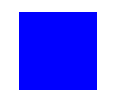
Figure 3.12 Simple blue texture created at runtime.¶
Now an example creating a gradient color:
function write_pixel(tPixel, width, height, x,y, channel, r,g,b,a)
index = ((y-1) * width * channel) + ((x-1) * channel) --find the index on the table to be filled
tPixel[index+1] = r
tPixel[index+2] = g
tPixel[index+3] = b
tPixel[index+4] = a
end
local tPixel = {} --our table to store the pixels
local widthTexture = 100
local heightTexture = 100
local channel = 4
--fill the texture table with gradient color (blue to green)
for y = 1, heightTexture do
--each column has a gradient collor
--blue starts from 255 to 0
--green starts from 0 to 255
local r = 0x00
local g = math.ceil((0xff / heightTexture) * (y))
local b = math.ceil((0xff / heightTexture) * (heightTexture - y))
local a = 0xff
for x = 1, widthTexture do
write_pixel(tPixel,widthTexture, heightTexture, x,y, channel, r,g,b,a)
end
end
--Our texture
local sTextureFileName = 'blue-to-green-gradient-texture.png'
--is important to check if the texture already exists,
--If the texture exists the createTexture method will return ok and do not overwrite the texture.
if not mbm.existTexture(sTextureFileName) then
print(string.format("texture [%s] does not exist! let's create it then!",sTextureFileName))
sTextureFileName = mbm.createTexture(tPixel,
widthTexture,
heightTexture,
channel,
sTextureFileName,
sTextureFileName)
end
if sTextureFileName ~= nil then
print('Successfully created texture:', sTextureFileName)
--now the texture exist and can be loaded for example from a textureView object:
tex_view = texture:new()
tex_view:load(sTextureFileName) --load the texture previously created
else
print('Something goes wrong!')
end

3.3.3. existTexture¶
- existTexture(string name)¶
This method verify if a texture exist internally. Exist means that it was loaded sometime during the execution the application and it is on memory.
- Parameters
string – name. the name can be also a nickname.
- Returns
boolean-trueif the texture exist and was loaded.
Example:
local ret = mbm.existTexture('Mario.png')
print('Mario.png is loaded in memory:',ret)
3.3.4. loadTexture¶
- loadTexture(string file_name_texture, boolean * alpha)¶
Load a texture indicating the file name and if it should have alpha (
trueby default).This function just load the texture an retrieve details about it. It does not show the texture in the screen. It kept in memory. The next object that will use that texture will get from memory.
- Parameters
string – name. the name can be also a nickname.
boolean – alpha. Force or instruct to have alpha (
trueby default).
- Returns
number- width,number- height,number- id from engine . (the id iszeroif has failed to load the texture),boolean- has alpha
Example:
local width,height,id, has_alpha = mbm.loadTexture('mario.png')
if id ~= 0 then
print('Texture loaded, width:',width,'height:',height,'has_alpha:',has_alpha)
else
print('Could not load the texture!')
end
Note
If the texture is already loaded the function just return the information. It does not reload the texture.
3.4. Shader¶
3.4.1. getShaderList¶
- getShaderList(boolean returnDetails*, string filter*, boolean bMin*, boolean bMax*, boolean bCode*)¶
This method retrieve one or more existent shader in a table.
- Parameters
boolean – return details flag refers to code and variables. Default is
falsestring – filter can be
psfor pixel shader,vsfor vertex shader ornilfor both.boolean – bMin flag refers to include the min value.
boolean – bMax flag refers to include the max value.
boolean – bCode flag refers to include the code.
- Returns
table- list of shader detail or list of name (without detail flag).
The following table represent a shader with all flags enabled:
{ name = 'gradient_horizontal.ps',
code = [[
precision mediump float;
uniform sampler2D sample0;
uniform vec4 right;
uniform vec4 left;
varying vec2 vTexCoord;
void main()
{
vec4 c1 = mix(left,right,vTexCoord.x);
c1.a = min(texture2D(sample0, vTexCoord).a,c1.a);
gl_FragColor = c1;
}
]],
var = {right = {0.5,0.5,0.5,0.5}, left = {1,1,1,1}},
min = {right = {0.0,0.0,0.0,0.0}, left = {0,0,0,0}},
max = {right = {1.0,1.0,1.0,1.0}, left = {1,1,1,1}}
}
The following table represent a return of getShaderList with detail flag disable:
{
[1] = 'bloom.ps',
[2] = 'brightness.ps',
[3] = 'gradient_horizontal.ps',
...
}
Here one example printing all shader name available:
local tShaders = mbm.getShaderList(false,nil)
table.sort(tShaders)
for i=1, # tShaders do
local name = tShaders[i]
print(string.format('Shader:[%s]', name))
end
The output:
Shader:[bloom.ps]
Shader:[blur directional.ps]
Shader:[blur zoom.ps]
Shader:[bright extract.ps]
Shader:[brightness.ps]
Shader:[color it.ps]
Shader:[color keying.ps]
Shader:[color tone.ps]
Shader:[edge gradient magnitude.ps]
Shader:[embossed.ps]
Shader:[explosion gaussian.ps]
Shader:[fade radial.ps]
Shader:[fade ripple.ps]
Shader:[fade saturate.ps]
Shader:[fade twist grid.ps]
Shader:[fade twist.ps]
Shader:[fade wave.ps]
Shader:[fade.ps]
Shader:[font.ps]
Shader:[frosty out line.ps]
Shader:[glass tile.ps]
Shader:[invert color.ps]
Shader:[luminance.ps]
Shader:[magnifying glass.ps]
Shader:[multi textura.ps]
Shader:[night vision blur.ps]
Shader:[night vision.ps]
Shader:[old movie.ps]
Shader:[out of bounds.ps]
Shader:[pinch mouse.ps]
Shader:[pinch.ps]
Shader:[poisson.ps]
Shader:[ripple.ps]
Shader:[saturate.ps]
Shader:[scale.vs]
Shader:[sharpen.ps]
Shader:[simple texture.vs]
Shader:[sketch.ps]
Shader:[smooth magnify.ps]
Shader:[spiral.ps]
Shader:[texture map.ps]
Shader:[tiled map.ps]
Shader:[tone mapping.ps]
Shader:[toon.ps]
Shader:[transparent.ps]
Shader:[wave.ps]
Here other example printing all detail available in the shader brightness.ps:
local bVariables = true --enable all variables
local filter = 'brightness.ps' --put nil to print them all
local bMin = true --enable min values
local bMax = true --enable max values
local bCode = true --enable code
local tShaders = mbm.getShaderList(bVariables,filter,bMin,bMax,bCode)
function print_recursive_table(t,indent)
if not indent then indent = 0 end
if type(t) ~= "table" then
formatting = string.rep("\t", indent) .. tostring(t)
print(formatting)
else
for k, v in pairs(t) do
formatting = string.rep("\t", indent) .. k .. ": "
if type(v) == "table" then
print(formatting)
print_recursive_table(v, indent+1)
else
print(formatting .. tostring(v))
end
end
end
end
for i=1, # tShaders do
local tShader = tShaders[i]
print_recursive_table(tShader)
end
Output:
name: brightness.ps
min:
brightness:
1: 0
contrast:
1: 0
max:
brightness:
1: 1
contrast:
1: 2
var:
brightness:
1: 0.5
contrast:
1: 1.5
code:
precision mediump float;
uniform float brightness;
uniform float contrast;
uniform sampler2D sample0;
varying vec2 vTexCoord;
vec4 xlat_main(in vec2 uv,in vec4 pixelColor)
{
pixelColor.xyz /= pixelColor.w;
pixelColor.xyz = (((pixelColor.xyz - 0.500000) * max(contrast, 0.000000)) + 0.500000);
pixelColor.xyz += brightness;
pixelColor.xyz *= pixelColor.w;
return pixelColor;
}
void main()
{
vec4 color = texture2D(sample0, vTexCoord);
if (color.a == 0.0)
discard;
else
gl_FragColor = xlat_main(vTexCoord,color);
}
All shader code are described at shader code.
3.4.2. existShader¶
- existShader(string name)¶
This method verify if a shader exists.
- Parameters
string – name for both type of shader
psorvs.- Returns
boolean- result of query.
Example:
if mbm.existShader('blend.ps') then
print('blend.ps found!')
else
print('blend.ps not exists!')
end
3.4.3. addShader¶
- addShader(table tShader)¶
Add a new shader to the engine. Note that you must verify if the shader already exist before try to add it using th function existShader. A shader table is described here at shader table.
- Parameters
table – tShader is a table with information for both type of shader
psorvs.- Returns
boolean- result of insert.
Example:
if not mbm.existShader('gradient_horizontal.ps') then
local tShaderGradient_horizontal =
{ name = 'gradient_horizontal.ps',
code = [[
precision mediump float;
uniform sampler2D sample0;
uniform vec4 right;
uniform vec4 left;
varying vec2 vTexCoord;
void main()
{
vec4 c1 = mix(left,right,vTexCoord.x);
c1.a = min(texture2D(sample0, vTexCoord).a,c1.a);
gl_FragColor = c1;
}
]],
var = {right = {0.5,0.5,0.5,0.5}, left = {1,1,1,1}},
min = {right = {0.0,0.0,0.0,0.0}, left = {0,0,0,0}},
max = {right = {1.0,1.0,1.0,1.0}, left = {1,1,1,1}}
}
if not mbm.addShader(tShaderGradient_horizontal) then
print("Error on add shader:",tShaderGradient_horizontal.name)
end
else
print('gradient_horizontal.ps already exists!')
end
More about shader can be found at shader table reference.
3.5. Miniz¶
3.5.1. compress¶
- compress(string fileIn, string fileOut*, number level*)¶
Compress a file using the MiniZ library.
- Parameters
string – file in is the file that will be compressed.
string – file out is the file name output. If not supplied will overwrite the file in.
number – level of compression. Valid values are between 0 (do not compress) and 10 (max compression by MiniZ lib).
- Returns
boolean- result of compression.
Example:
if mbm.compress('/tmp/my_data.txt') then
print('Successfully compressed')
else
print('Failed to compress file')
end
3.5.2. decompress¶
- decompress(string fileIn, string fileOut*)¶
- Parameters
string – file in is the file that will be decompressed.
string – file out is the file name output. If not supplied will overwrite the file in.
- Returns
boolean- result of decompression.
Example:
if mbm.decompress('/tmp/my_data.txt') then
print('Successfully decompressed')
else
print('Failed to decompress file')
end
3.6. Aes¶
3.6.1. encrypt¶
- encrypt(string fileIn, string fileOut*, string password*)¶
Encrypt a file using the AESCrypt library.
- Parameters
string – file in is the file that will be encrypted.
string – file out is the file name output. If not supplied or nil will overwrite the file in.
string – password to be used. If not informed the engine will use the default one which change each release.
- Returns
boolean- result of encrypt.
Example:
if mbm.encrypt('/tmp/my_data.txt',nil,'12345') then
print('Successfully encrypted')
else
print('Failed to encrypt')
end
3.6.2. decrypt¶
- decrypt(string fileIn, string fileOut*, string password*)¶
Decrypt a file previously encrypted using the encrypt method.
- Parameters
string – file in is the file that will be decrypted.
string – file out is the file name output. If not supplied or nil will overwrite the file in.
string – password to be used. If not informed the engine will use the default one which change each release.
- Returns
boolean- result of decrypt.
Example:
if mbm.decrypt('/tmp/my_data.txt',nil,'12345') then
print('Successfully decrypted')
else
print('Failed to decrypt')
end
3.7. Useful¶
3.7.1. shuffle¶
- shuffle(string message, string key)¶
Encrypt alphabetic text by using a series of interwoven Caesar ciphers, based on the letters of a keyword. See Vigenère cipher for more information how it works.
- Parameters
string – message is the text to be encrypted.
string – key is the keyword to shuffle.
- Returns
string- text encrypted.
Example:
local original = 'Hello World using Vigenere algorithm'
local key = 'myKeyIsSomethingLikeThis'
local msg = mbm.shuffle(original,key)
local decryptedMsg = mbm.undoShuffle(msg,key)
print('original:',original) --Hello World using Vigenere algorithm
print('msg:',msg) --Tcvpm Ogfxh bavtr Fmzlvwdc ejogjwflf
print('decrypted:', decryptedMsg)--Hello World using Vigenere algorithm
3.7.2. undoShuffle¶
- undoShuffle(string message, string key)¶
Undo a encrypt alphabetic text previously encrypted by the method shuffle .
- Parameters
string – message is the text to be decrypted.
string – key is the keyword to undo the shuffle.
- Returns
string- text decrypted.
Example:
local original = 'Hello World using Vigenere algorithm'
local key = '123456What'
local msg = mbm.shuffle(original,key)
local decryptedMsg = mbm.undoShuffle(msg,key)
print('original:',original) --Hello World using Vigenere algorithm
print('msg:',msg) --Dllek Whnsd qzigc Vbclnxnl thnokeahf
print('decrypted:', decryptedMsg)--Hello World using Vigenere algorithm
3.7.3. existFile¶
- existFile(string name)¶
This method verify if a file exist by trying to open it. If the name has not the full path, the engine will try all path known. See addPath.
- Parameters
string – name. the file name.
- Returns
boolean- true if the file exist.
Example:
local ret = mbm.existFile('test.txt')
print('Test.txt exists:',ret)
3.7.4. getPathEngine¶
- getPathEngine(string* fileName)¶
This method retrieve the path where the engine is running for Linux and Windows. For Android will retrieve a default path to read and write files runtime.
- Parameters
string – fileName to be concatenated at the end of path.
- Returns
string- full file name or path engine.
Example:
local fileName = mbm.getPathEngine('test.data')
print('fileName:',fileName)
3.7.5. getFullPath¶
- getFullPath(string* fileName)¶
This method will try to retrieve the full path from a file. If could not retrieve, will return the same file name.
- Parameters
string – fileName to get the full path.
- Returns
string- full file name or file name.
Example:
local fileName = mbm.getFullPath('test.data')
print('full path:',fileName)
3.7.6. onErrorStop¶
- onErrorStop(boolean value)¶
This method inform the engine to stop calling loop method if an error occurred.
- Parameters
boolean – value enabling or disabling calling loop method.
Example:
mbm.onErrorStop(true)
3.7.7. getKeyName¶
- getKeyName(number code)¶
- Parameters
number – code number.
- Returns
string- key name.
Note
There is an attempt to standardize this method for all SO however is still on progress.
Example:
--example 1
local keyName = mbm.getKeyName(27)
print('keyName:',keyName) -- On Windows the output is 'ESC'
--example 2
function onKeyDown(key)
if mbm.getKeyName(key) == 'A' then
print('A pessed')
elseif mbm.getKeyName(key) == 'left' then
print('go left')
elseif mbm.getKeyName(key) == 'right' then
print('go right')
elseif mbm.getKeyName(key) == 'space' then
print('Jump!')
end
end
3.7.8. getKeyCode¶
- getKeyCode(number key)¶
- Parameters
number – key as
string.- Returns
number- code for the input key.
Note
There is an attempt to standardize this method for all SO however is still on progress.
Example:
--example 1
local keyCode = mbm.getKeyCode('ESC')
print('keyCode:',keyCode) -- On Windows the output is 27
--example 2
function onKeyDown(key)
if mbm.getKeyCode('A') == key then
print('A pressed')
elseif mbm.getKeyCode('left') == key then
print('go left')
elseif mbm.getKeyCode('right') == key then
print('go right')
elseif mbm.getKeyCode('space') == key then
print('Jump!')
end
end
3.7.9. isCapitalKeyOn¶
- isCapitalKeyOn¶
Recover the state of Caps Lock on or off.
Example:
function onKeyDown(key)
if mbm.getKeyCode('A') == key then
if mbm.isCapitalKeyOn() then
print('Key A is uppercase')
else
print('Key a is lowercase')
end
end
end
3.7.10. getIdiom¶
- getIdiom¶
Recover the language (region) from the system. The return string is according to the SO.
- Returns
string- idiom for the SO.
Example:
local idiom = mbm.getIdiom()
print('idiom:',idiom)
--a possible output could be:
--pt-BR
--American English
3.7.11. getUserName¶
- getUserName¶
Recover the user name form current SO.
- Returns
string- user name for the currently SO.
Example:
local user = mbm.getUserName()
print('Welcome ',user)
3.7.12. getSceneName¶
- getSceneName¶
Recover the currently scene name.
- Returns
string- scene name.
Example:
local scene = mbm.getSceneName()
print('Scene:',scene)
3.7.13. refresh¶
- refresh¶
Force to reload all renderizables object. This is a way to test a lost device graph.
Note
Is not recommend to use this method frequently.
Example:
mbm.refresh()
3.7.14. windowSize¶
- setMinMaxWindowSize(number * min_x, number * min_y, number * max_x, number * max_y)¶
Set min/max size for the window allowed. Zero means “allowed”.
Note
This method has no effect on Android.
Example:
local min_x,min_y = 800, 600
local max_x,max_y = 1024, 768
mbm.setMinMaxWindowSize(min_x,min_y,max_x,max_y)
3.7.15. listFiles¶
- listFiles(string folder, boolean * recursive)¶
List files in folder
- Parameters
boolean – recursive indicate to list recursive folders.
- Returns
table- files listed{separator = '/' or '\\', path = 'folder', [1] = file, [2] ...}.
Example:
local recursive = true -- if recursive is false it will add a empty table with the folder name (path). It will not list the files inside.
local tFolders = mbm.listFiles('/home/jose/project', recursive)
print('separator', tFolders.separator)
for i=1, #tFolders do
local files = tFolders[i]
print('Folder:',files.path)
print('Files:')
for j=1, #files do
print(files[j])
end
print('')
end
3.8. Android¶
3.8.1. doCommands¶
- doCommands(string command, string parameter)¶
Execute a custom native command on Android platform. For example if we want to do a custom command using Java class, this is the way to that.
- Parameters
string – command to be interpreted in native side.
string – parameter is a optional parameter to be used in native side.
There are some registered commands in Android. Here they are:
Command
parameter
explanation
API-level
Retrieve the current API level on Android
vibrate
milliseconds
Call vibration method during x milliseconds.
You have to add permission on manifest for this.
Following some examples calling the methods above:
local apiAndroidLevel = mbm.doCommands('API-level')
print('The current API on Android is:',apiAndroidLevel)
local ms = 500
mbm.doCommands('vibrate',500) --vibrate for 500 milliseconds
Now a simple implementation:
Lua side:
local result = mbm.doCommands('key-command-1','my parameter')
print(result) -- prints "OKAY from Java"
Java side:
@Override
public String OnDoCommands(String key, String param)
{
if(key== "key-command-1")
{
Log.d("java", "my command is :" + key +" parameter:" + param);
//we can do some specific command here
return "OKAY from Java";
}
else
{
return "NOKAY from java!, Command not implemented:" + key;
}
}
3.8.2. luaFunction¶
- luaFunction(string function, string parameter)¶
Call a LUA function from Java (Android).
Example:
/*Call Lua native function*/
luaFunction("print","Hello from Java!");
/*Call my personal defined function*/
luaFunction("some_lua_function","execute");
function some_lua_function(param)
--Do something
if param == 'execute' then
print('param is execute. we will execute some command ...')
end
end
